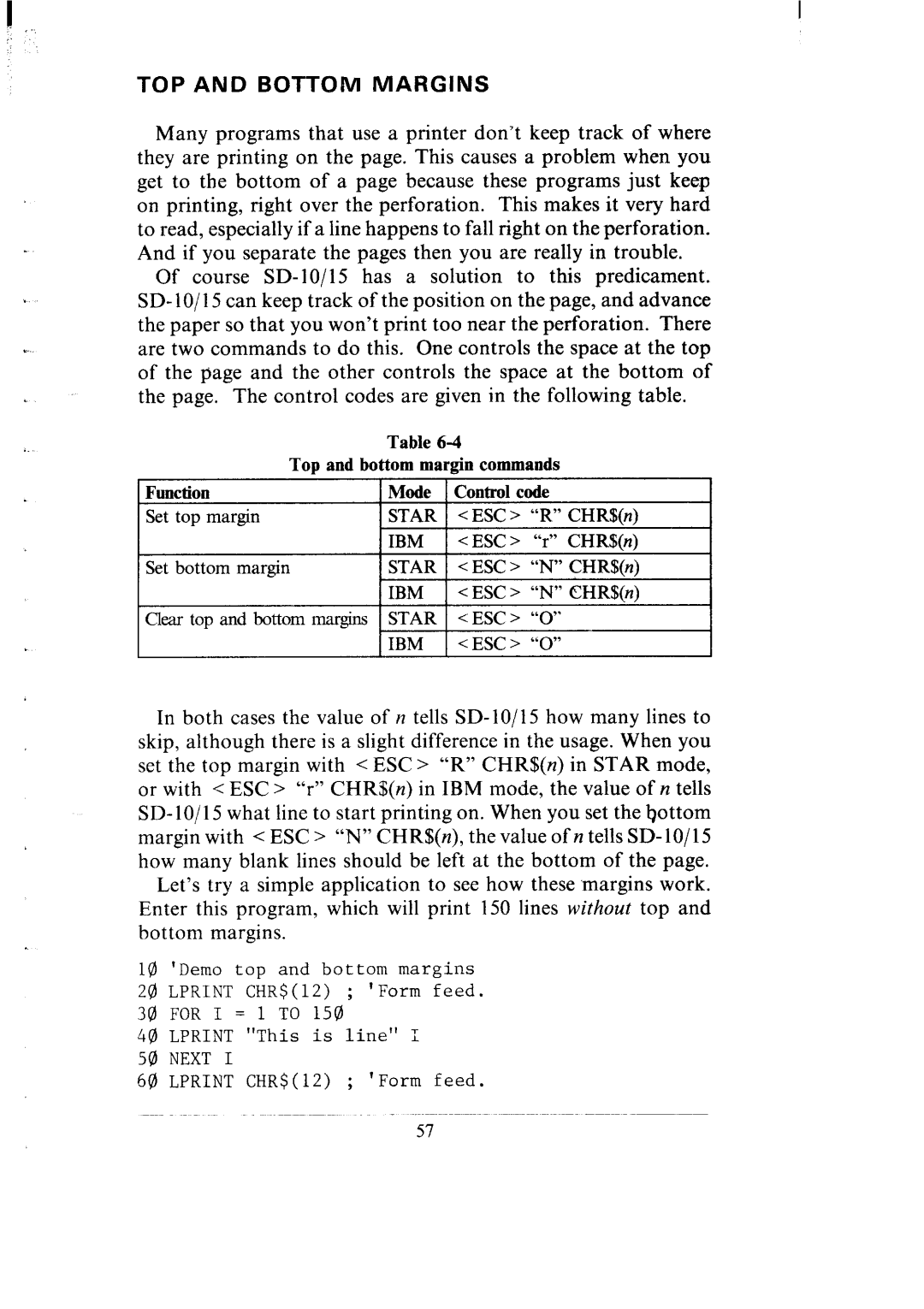
TOP AND BOTTOM MARGI NS
Many programs that use a printe :r don’t keep track of where they are printing on the page. This causes a problem when you get to the bottom of a page because these programs just keep
on printing, right over the perforation. This makes it very hard to read, especially if a line happens to fall right on the perforation. And if you separate the pages then you are really in trouble.
Of course SD- 1O/l 5 has a solution to this predicament. SD- lo/ 15 can keep track of the position on the page, and advance the paper so that you won’t print too near the perforation. There are two commands to do this. One controls the space at the top of the page and the other controls the space at the bottom of the page. The control codes are given in the following table.
Table
Top and bottom margin commands
Function | Mode | Control code | |
Set top margin | STAR | < ESC > | “R” CHR$(n) |
| IBM | < ESC > | “r” CHR$(n) |
Set bottom margin | STAR | < ESC > | “N” CHR$(n) |
| IBM | 1 < ESC > | “N” CHR!Nn’l |
|
| 1 | \ , |
Clear top and bottom margins | STAR | < ESC > | “0” |
| IBM | <ESC> | “0” |
In both cases the value of n tells SD- 10/l 5 how many lines to skip, although there is a slight difference in the usage. When you set the top margin with < ESC > “R” CHR$(n) in STAR mode, or with < ESC > “r" CHRS(n) in IBM mode, the value of n tells
Let’s try a simple application to see how these margins work. Enter this program, which will print 150 lines without top and bottom margins.
10 'Demo top and bottom margins
20 LPRINT CHR$(12) ; 'Form feed.
30FOR I = 1 TO 150
40 LPRINT "This is line" I
50 NEXT I
60 LPRINT CHR$(12) ; 'Form feed.
57
